Water covers more than 70% of the Earth’s surface. It is only logical that humans have tried to explore the ocean, sea, and water surface in general since ancient times. Storytellers through history talked about creatures living in the sea.
Mythical sea monsters and sea creatures have populated waters since forever. These giant ocean monsters could wreak havoc on the surface at any given time.
Some of the mythological sea creatures are so large they could lay waste to an entire city with ease.
Mythology has always fascinated people. And if you fall into that category, read on about some of the most famous and popular sea creatures.
What is a sea monster?
We have to define the term sea monster before we can move on. The simple definition is any creature that comes from the sea, real or mythical, and comes in unusually large and threatening size. Many cultures have had contact with sea creatures. Any culture and civilization that has a water surface in its territory have a story or two about sea monsters.
What inspired the myths, stories and dreams about terrible sea creatures? Well, sailing is one of the oldest professions. And sailors always come back with a story to tell.
Here are some of the best stories sailors have come up with throughout the years.
Cthulhu
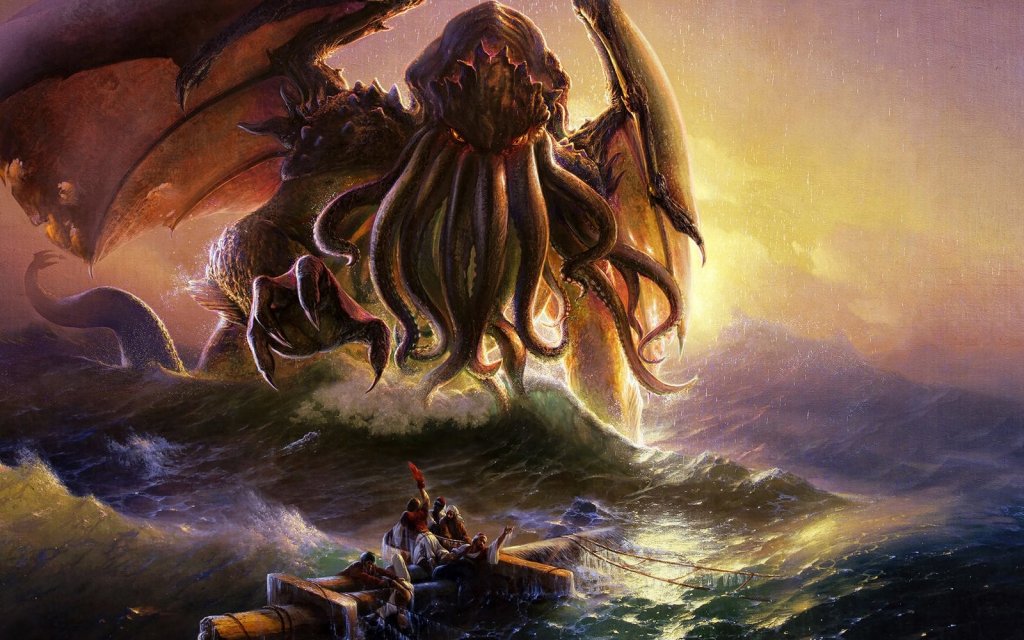
This is a creature that Howard Phillips Lovecraft created. The American writer of weird and horror fiction got famous for his Cthulhu Mythos. Read his stories to find out more about this entity that dwells beneath the waves.
He is the most famous creation by Lovecraft. The author describes it as a creature resembling an octopus, a dragon, and a human caricature. He waits dreaming in his house in a sunken city, and when he wakes up, trouble comes.
Vodyanoy
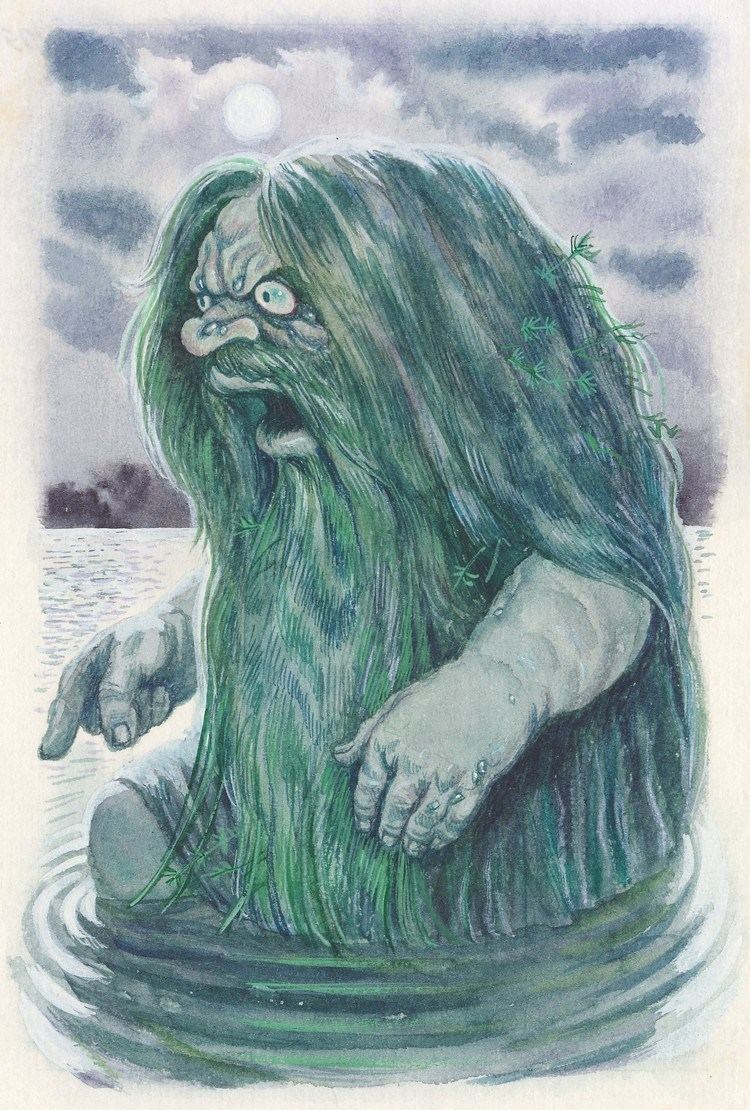
This water-dwelling spirit lives in rivers, ponds, and streams. He is a creature from Slavic tradition. The authors describe him as a male creature with a fat flabby body and face covered with greenish hair. He also has a long green beard stretching down to his feet.
In many stories, he got blamed for drowning villagers and causing floods. Some legends also describe him as kidnapping young girls and disguising himself as a beautiful flower.
To get rid of him, people blessed the rivers or bonds where the creature appeared. But fishermen respected him, and they offered him tobacco as a gift, hoping to get good fish on their trip.
Cetus
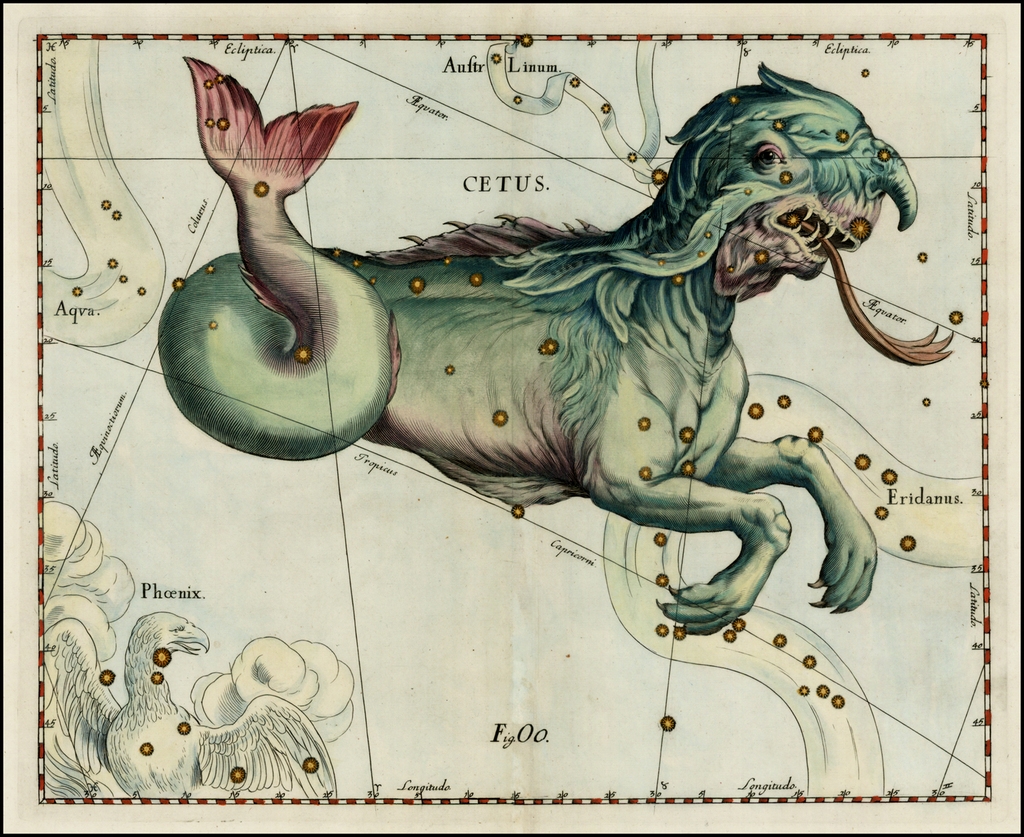
In Greek mythology, authors use the word Cetus to describe sea monsters. They refer to many sea monsters as Cetus.
The term is vague, but based on some clues and stories, we know that Cetus was a sort of serpent/dragon, shark, whale, or fish.
In one of the most famous stories about the creature, Poseidon sent Cetus to devour Andromeda. He wanted to punish Andromeda’s mother for boasting that her daughter was more beautiful than all of the nereids. And you know how it goes, Poseidon was married to one of the nereids, and couldn’t stand someone saying his wife was not the most beautiful.
The story goes that Perseus saved Andromeda at the last minute, and he could overcome Cetus by using Medusa’s head.
Dagon
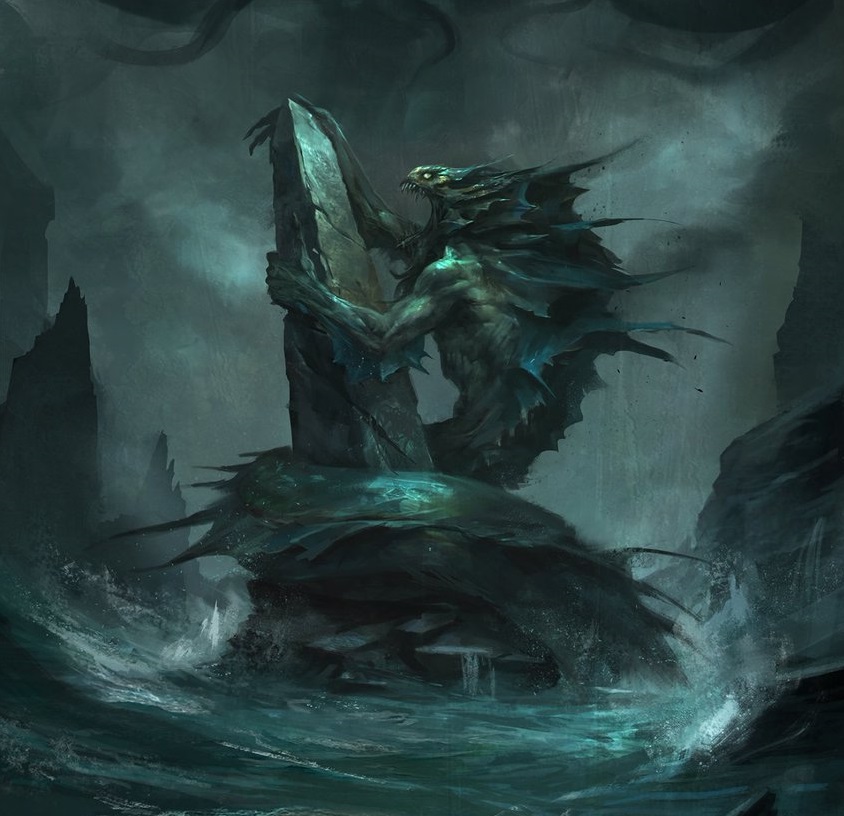
Here is another creature that Lovecraft mentioned in his stories. Dagon was an actual deity from Ancient times. He appears in the most famous story by Lovecraft, “Esoteric Order of Dagon”.
The creature also plays a major role in other stories.
Amabie
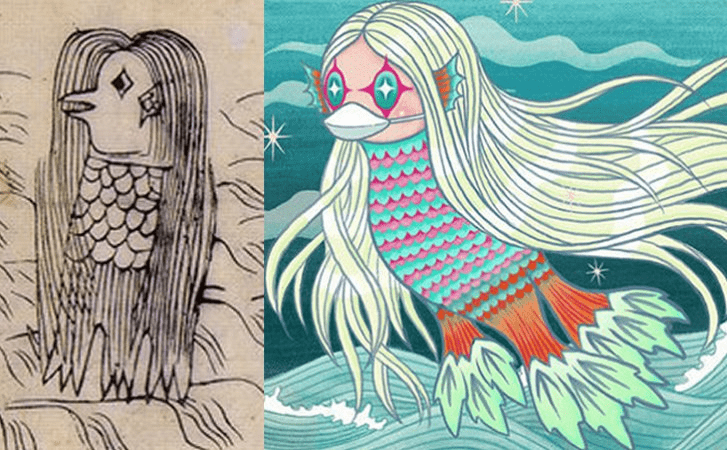
Let’s shift to the East for a while. Amabie appears in Japanese legends during the Edo Era. During that period, the Japanese population lived mostly in agricultural societies.
The sea creature appeared to people whom she prophesied about a good harvest or an imminent epidemic. She had a body of a fish with scales covering her skin.
Kraken

Release the Kraken. That is one quote most of us have heard during their life. Fun fact: the name comes from Norwegian, where it means “an unhealthy or twisted animal”. Yet, the word entered the popular lexicon as one of the main monsters in the movie Clash of the Titans.
The Kraken actually shares a lot of similarities to the Greek version of Cetus. Both mythological creatures are large sea monsters. The mythological Kraken closely resembles a giant squid.
The second installment of the Pirates of the Caribbean movie also featured a creature looking like the Kraken. It is a more mythically accurate depiction of the creature.
Finfolk
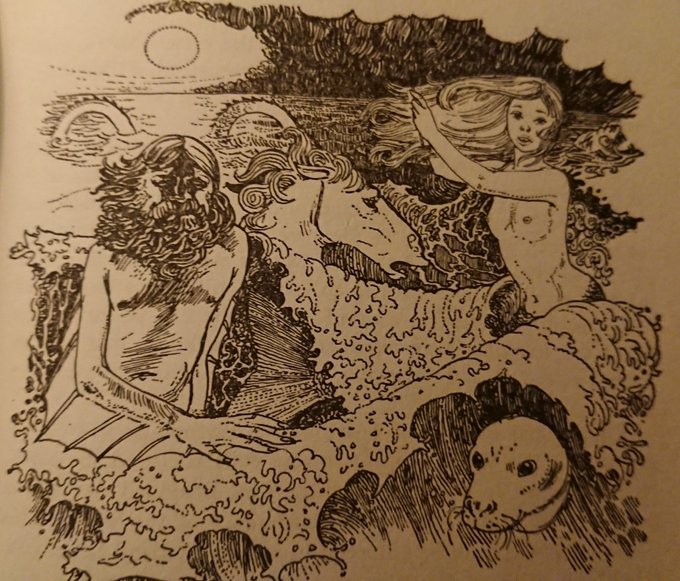
These creatures appear in Celtic mythology. They are basically a group of mermaid-like sorcerers. They alternate their time between an underwater paradise and a colony on dry land.
Finfolk often took advantage of the human population. They took the most desirable men and women with them as spouses. Once the finfolk took men or women, you could never see them again.
According to some legends, these amphibious creatures left the Orkney Islands once Christianity arrived in that part of the world.
Scylla & Charybdis
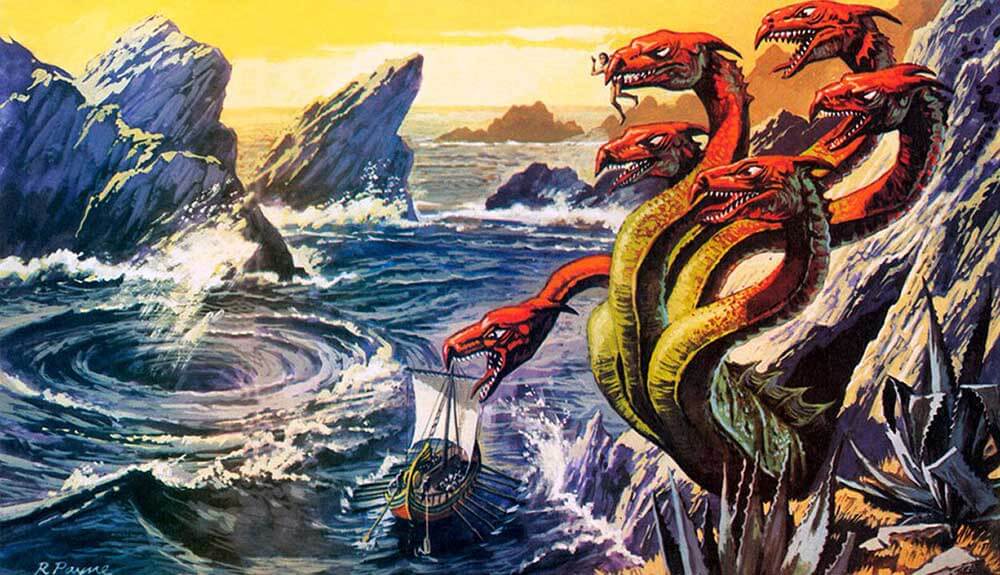
These are two different creatures. But we have to mention them together, as they appear together in many stories. The most famous legend about these two creatures comes from the legend of Odyssey. The two monsters dwell on either side of the Strait of Messina.
Scylla represented the dangers of the rocky shore. She was depicted in various ways, mostly a woman with a dragon-like tail and dog heads sprouting from her body. Charybdis, on the other hand, represented a deadly whirlpool. This is where the idiom “between Scylla and Charybdis” comes from. It means “getting tuck between a rock and a hard place”.
Charybdis lived under a small rock on one side of the Messina channel. She terrorized sailors and warriors who tried to pass through. According to a legend, Charybdis was the daughter of Poseidon and Gaia. Zeus turned her into a terrible monster, and part of her curse was to make her thirst for the sea so much that she had to swallow large quantities of water. This is what caused whirlpools.
Sirens
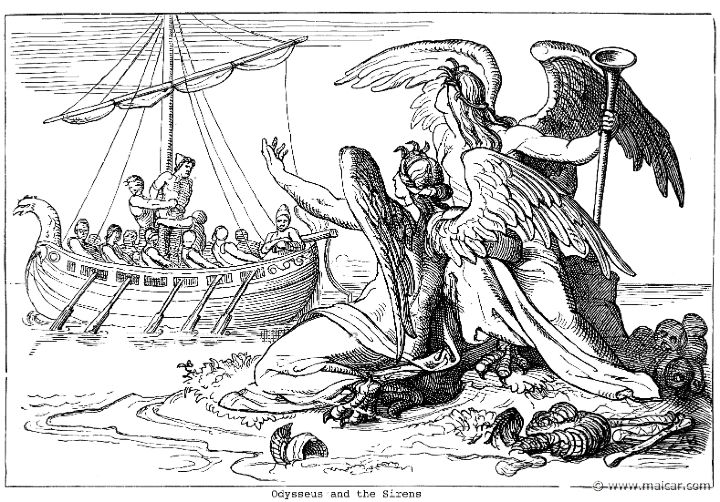
Sirens are basically the finfolk of Greek mythology. They are famed for luring unwary sailors, using their lovely and enchanting songs.
They appear in two popular legends in Greek mythology, one about Jason and the Argonauts, and one about Odysseus and his voyage.
Most depictions show them as part-woman and part-bird. Some recent variants, however, take a looser approach.
Jörmungandr
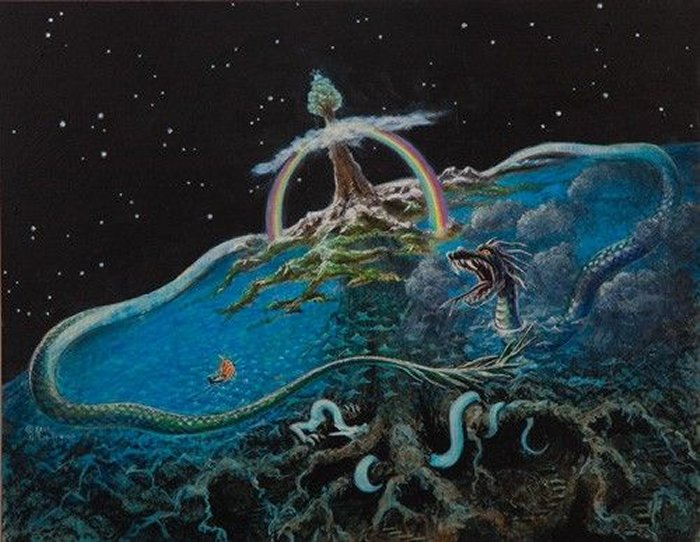
This creature in Norse mythology represents the Midgard Serpent. It is so long that it wraps all the way around the world. The Jörmungandr can hold its own tail in the mouth.
The creature is an offspring of Loki and a giantess by the name of Angrboda. And when Jörmungandr releases its tail, it will mark the beginning of Ragnarok.
During that cataclysmic event, Thor will have a final battle with the sea creature, slaying the mighty serpent. But Thor will fall dead from the venom of the creature.



